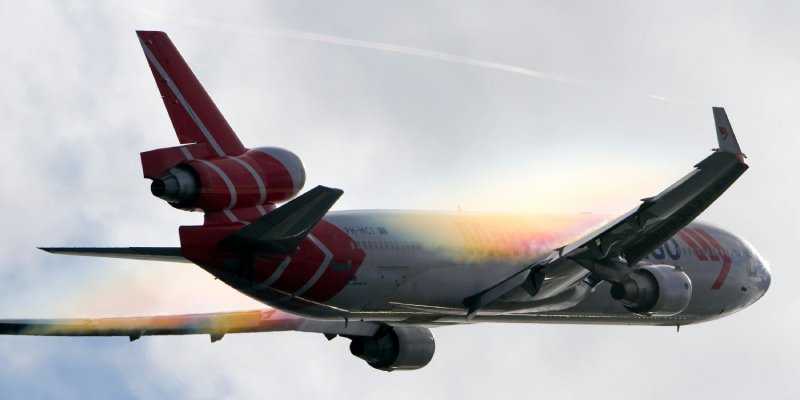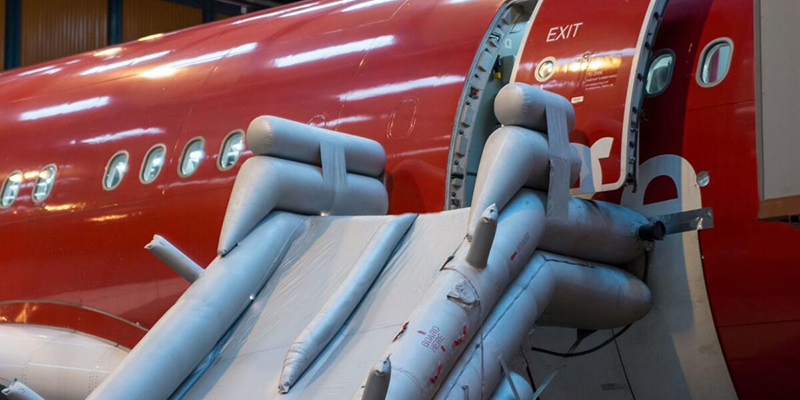Have you ever wondered how your smartphone, made in one country, ends up in your hands thousands of miles away? Or how fresh flowers from Kenya can appear in New York flower shops the very next day? The answer is flying high above us every single day – it’s air freight, the superhero of global shipping!
There are two main ways cargo is carried:
1. In passenger planes (belly cargo)– using the space under the passenger cabin.
2. Dedicated freighter aircraft– planes designed only for carrying cargo, like the Boeing 747-8F or Airbus A330F.
What is Air Cargo, Anyway?
Imagine a huge airplane, not just carrying people, but packed with boxes, packages, and even big machines! That’s air cargo, also known as air freight. Air freight is like having a super-fast delivery truck that can fly. Instead of driving on roads, these special cargo planes soar through the sky, carrying everything from tiny computer chips to life-saving medicines across continents in just hours or days.
1. Speed and Efficiency: Air freight is the fastest way to move goods over long distances. While ships and trucks are slower, airplanes can deliver goods across continents in a single day. This speed is crucial for things like fresh food, medicine, and urgent parts for factories.
2. High Value, Low Volume: Even though only about 2-3% of the world’s cargo (by weight) travels by air, these goods are worth about 35% of all global trade—over $6 trillion every year. This includes electronics, medicines, fashion, and other valuable items.
3. Connecting the Global Family: Air freight makes our world feel smaller. A farmer in Colombia can pick coffee beans on Monday, and by Wednesday, someone in Japan can be enjoying that same coffee. This connection helps people all over the world share their products, ideas, and cultures.
4. Handling Emergencies: During the COVID-19 pandemic, air cargo was a lifeline for delivering vaccines and medical supplies quickly and safely, showing how vital it is for emergencies.
How Air Cargo Works: The Sky Highway for Global Trade
Air cargo moves 35% of global trade by value in just hours, connecting 3,000+ airports worldwide. Here’s how this invisible system works:
- The Journey: A Global Relay Race
- Pickup to Plane: Freight forwarders collect goods, handle documentation, and navigate customs. Packages are weighed, security-screened, and sorted at cargo facilities near airports.
- Loading: Specialized crews play “3D Tetris” with cargo, using computer systems to optimize space and balance weight. Everything gets secured against turbulence.
- Flight: Advanced sensors monitor temperature and pressure while GPS tracks every package in real-time.
- Landing: Quick unloading teams race against time. Customs inspects shipments, sorting systems redirect packages, and trucks handle final delivery.
The Amazing World of Cargo Planes
Meet the Sky Giants
Cargo planes are the heavyweight champions of aviation. The legendary Antonov An-225 “Mriya” could swallow entire trucks whole! These flying warehouses feature:
- Massive cargo doors that open like airplane-sized garage doors
- Reinforced floors built to handle crushing weight
- Smart loading systems with rollers and conveyor belts
- Climate control keeping sensitive cargo at perfect temperatures
Different Planes, Different Jobs
Like tools in a toolbox, each cargo plane has its specialty:
- Freighters: Pure cargo workhorses with no passenger seats
- Boeing 747-8F and 777F (the heavy lifters)
- Airbus A330F (the versatile middle-weight)
- ATR 72F (the regional specialist)
- Combi Aircraft: Half passengers, half cargo on the main deck (rare today)
- Passenger Planes: Your flight’s “belly cargo” earns airlines extra revenue from the space beneath your feet
- Converted Aircraft: Retired passenger jets reborn as dedicated cargo haulers
- Specialized Giants: Custom-built for unique cargo like automobiles or oversized industrial equipment
From tiny packages to massive machinery, these aerial titans keep global commerce soaring—literally moving the world, one flight at a time.
Air Freight Hubs: Sky-High Cargo Central
What Makes These Hubs Special?
Air freight hubs are the world’s busiest airports – but for cargo, not people. Think of them as giant sorting centers in the sky. The best ones share these key features:
- Perfect Spot: They sit right where major flight paths meet, like being at the center of a giant web.
- Always Open: These hubs work around the clock. While you sleep, they’re moving millions of packages.
- Smart Systems: High-tech scanners and sorting machines track every box, making sure your online order gets to the right place.
- Runway Power: Multiple runways mean dozens of cargo planes can arrive and leave at the same time.
The World's Cargo Champions
- Memphis, USA – FedEx’s home base processes over 4 million packages every single night. It’s like a city that never sleeps.
- Hong Kong – This hub connects Asia to everywhere else. Nearly every package traveling between China and the world passes through here.
- Dubai, UAE – Perfectly placed to link Europe, Asia, and Africa. It’s the crossroads of three continents.
- Frankfurt, Germany – Europe’s cargo king handles everything from car parts to fresh flowers crossing the continent.
- Anchorage, Alaska – The ultimate pit stop. Cargo planes flying from Asia to North America often refuel here, making it one of the busiest hubs despite its remote location.
Technology: Making Air Freight Smarter
Modern air freight tracks everything with precision:
Every Package Has a Digital Twin
- RFID tags: Like tiny computers attached to packages
- GPS tracking: Knowing exactly where every plane is
- Barcode scanning:Barcode readers instantly identify packages faster than you can blink.
- Smartphone apps: Customers can watch their packages travel in real-time
Robot Workforce Takes Over
Machines are doing the heavy lifting:
- Sorting robots: Machines that can sort thousands of packages per hour
- Automated loading: Systems that can load planes without human help
- Inventory robots: Machines that keep track of what’s in the warehouse
- Drone delivery: Small flying robots for final delivery in some cities
AI: The Smart Brain Behind It All
Artificial intelligence makes everything run smoother:
- Predict delays: Knowing when weather might cause problems
- Optimize routes: Finding the fastest and cheapest paths
- Manage inventory: Keeping just the right amount of everything in stock
- Prevent problems: Spotting issues before they become big problems
Challenges and the Road Ahead
- The air cargo industry faces challenges like rising fuel costs, geopolitical tensions, and the need to balance speed with sustainability.
- Still, experts predict that demand for air cargo will keep growing, especially as global trade and e-commerce expand.
Conclusion
Air freight is the backbone of fast, global trade. It helps deliver the things we need, when we need them, no matter where we are. As technology and shopping habits change, air cargo is adapting—becoming smarter, faster, and greener. For anyone interested in logistics, aviation, or global business, understanding air freight is key to seeing how our world stays connected.






